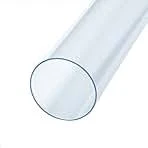Dec . 01, 2024 09:07 Back to list
ppr pipe fitting
Understanding PPR Pipe Fittings A Comprehensive Guide
As the construction and plumbing industries evolve, the materials used in piping systems must also adapt to meet modern demands for efficiency, durability, and sustainability. Among the variety of materials available, Polypropylene Random Copolymer (PPR) has emerged as a preferred choice for many professionals due to its unique properties and benefits. This article explores PPR pipe fittings, their advantages, applications, and installation techniques.
What is PPR?
PPR, or Polypropylene Random Copolymer, is a thermoplastic polymer widely used in piping systems. It is manufactured using a specific process that creates a material with a random structure, providing greater flexibility and resistance to stress compared to standard polypropylene. PPR is known for its robustness, longevity, and resistance to temperature fluctuations, making it suitable for various applications, from residential plumbing to industrial systems.
Advantages of PPR Pipe Fittings
1. Durability PPR pipe fittings are highly resistant to corrosion, chemical degradation, and scaling, ensuring a long service life. Unlike metal pipes, which may rust over time, PPR remains intact, minimizing maintenance needs.
2. Temperature Resistance PPR can withstand temperatures ranging from -40°C to 95°C (-40°F to 203°F), making it ideal for hot and cold water systems. Its thermal insulation properties also help in energy conservation, reducing heat loss in hot water applications.
3. Lightweight PPR fittings are significantly lighter than traditional piping materials like PVC or metal, making transportation and installation easier and more cost-effective.
4. Easy Installation PPR fittings can be joined using simple welding techniques, ensuring a secure and leak-free connection. This can significantly reduce labor costs and time compared to other piping systems that require adhesives or special fittings.
5. Non-toxic and Eco-friendly PPR is a non-toxic material that does not leach harmful chemicals into drinking water. Its recyclability also contributes to environmental sustainability, making it a responsible choice for eco-conscious consumers and builders.
Applications of PPR Pipe Fittings
ppr pipe fitting

PPR pipe fittings are versatile and used across various sectors, including
- Residential Plumbing For potable water supply, heating systems, and drainage applications. - Industrial Uses In chemical processing plants, food and beverage processing, and pharmaceutical manufacturing, where resistance to corrosion and chemical reactions is critical. - Irrigation Systems In agriculture for efficient water distribution and conservation practices. - Renovation Projects Ideal for retrofitting existing plumbing systems due to their lightweight nature and ease of installation.
Installation Techniques
Proper installation is vital for the longevity and performance of PPR piping systems. Here are some key steps to ensure a successful installation
1. Preparation Before installation, ensure all materials are clean and free from dirt, dust, or grease to maintain secure joints.
2. Cutting Use a pipe cutter or saw designed for PPR to achieve smooth cuts. Avoid jagged edges that could compromise the integrity of the fittings.
3. Welding Heat welding is the most common method for joining PPR fittings. Utilize proper equipment, ensuring that the pipes and fittings are heated to the appropriate temperature, typically around 260°C (500°F). Once heated, connect the pieces promptly and hold them in place until cooled.
4. Testing After installation, conduct a pressure test to check for leaks. This step is crucial to ensure the integrity of the system before covering or burying pipes.
5. Maintenance Regular inspections can help ensure that the system remains in good condition. Although PPR fittings require minimal maintenance, it is essential to address any issues promptly.
Conclusion
PPR pipe fittings offer a reliable, efficient, and eco-friendly solution for a wide range of plumbing and piping needs. Their durability, easy installation process, and versatility make them a favorite among contractors and homeowners alike. As environmental concerns grow, the adoption of sustainable materials like PPR is likely to rise, cementing its place in the future of construction and plumbing industries. Whether building new systems, renovating, or upgrading, understanding and utilizing PPR pipe fittings can lead to substantial benefits and improved performance.
-
High-Quality PPR Pipes and Fittings Durable ERA PPR & PVC PPR Solutions
NewsJul.08,2025
-
Black HDPE Cutting Board - Durable, Non-Porous & Food Safe HDPE Plastic Cutting Board
NewsJul.08,2025
-
High-Quality CPVC Panel Durable HDPE & PVC Panels Supplier
NewsJul.08,2025
-
Double PE Welding Rod Supplier - High Strength, Durable & Versatile Welding Solutions
NewsJul.07,2025
-
High-Quality PVC-O Pipe Supplier Durable 75mm PVC Pipe & Connections Leading PVC Pipe Company
NewsJul.07,2025
-
HDPE Drainage Pipe Supplier – Durable & Corrosion-Resistant Solutions
NewsJul.06,2025

